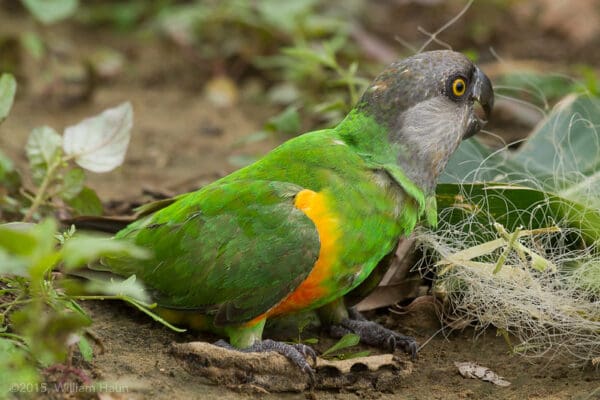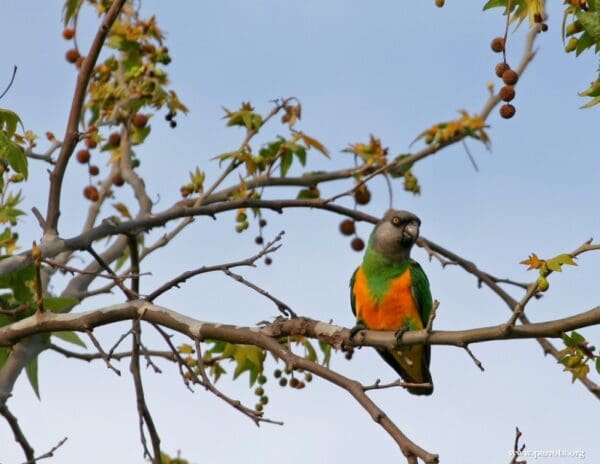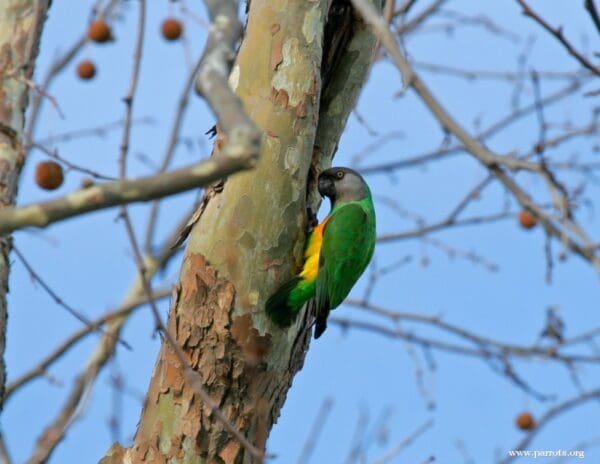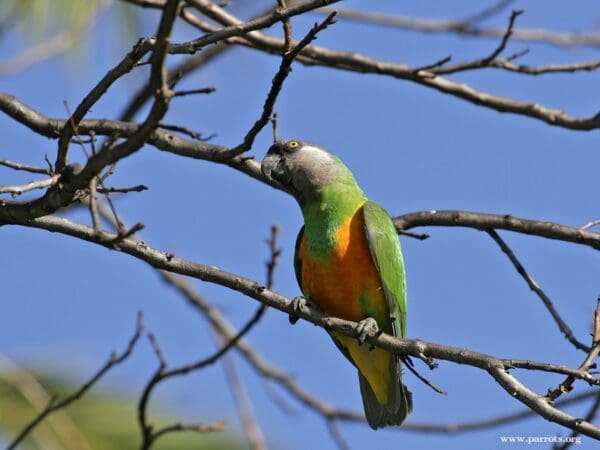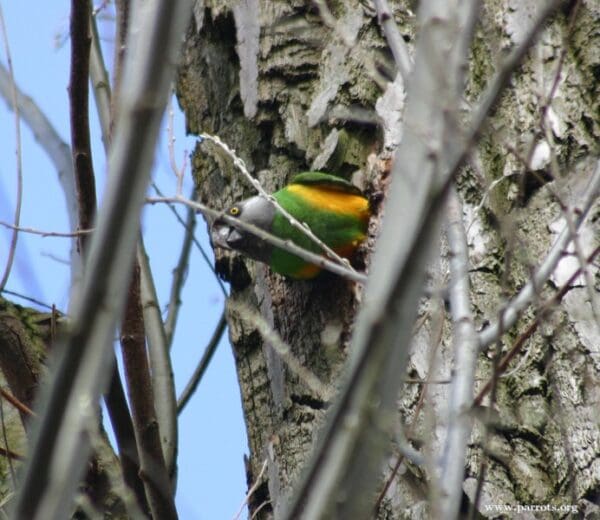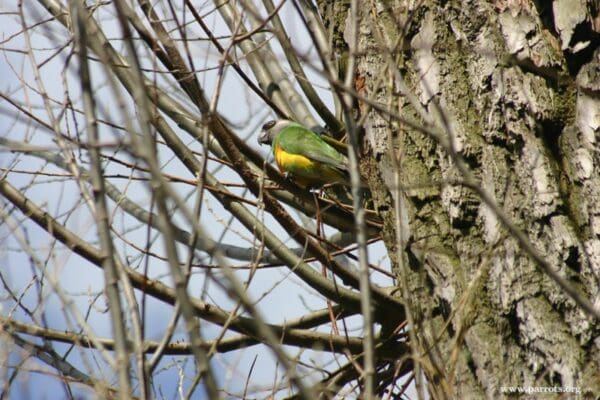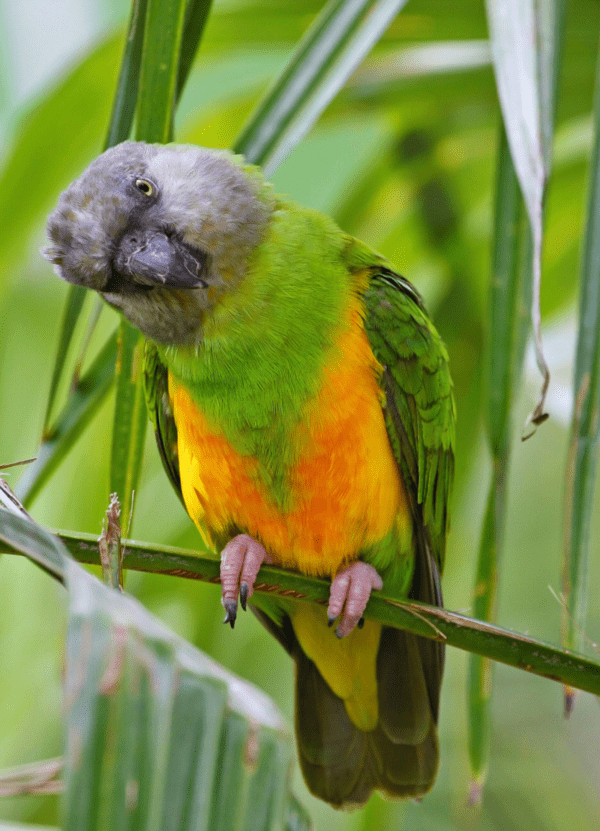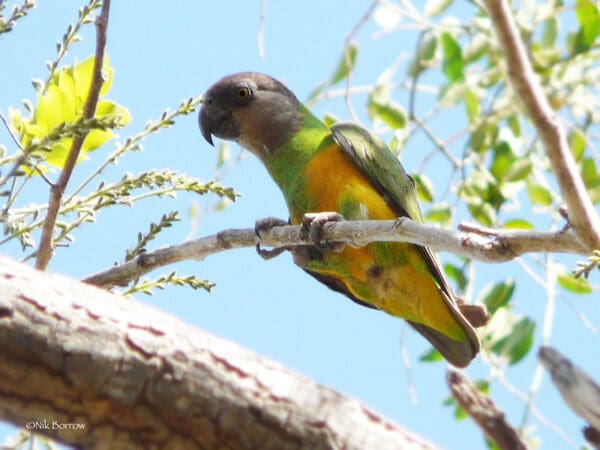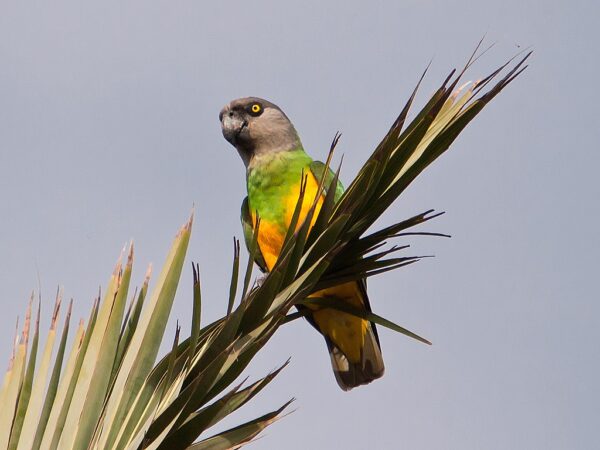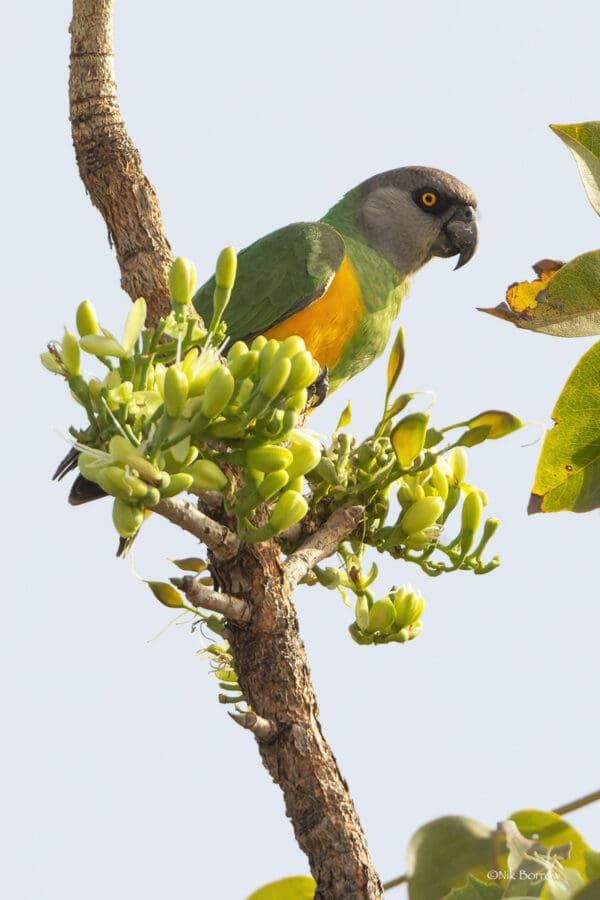Senegal Parrot
Also known as:
Yellow-bellied Senegal Parrot (P.s. senegalus); Yellow-vented Senegal Parrot (P.s. mesotypus); Orange-breasted Senegal Parrot, Orange-bellied Senegal Parrot, Red-vented Senegal Parrot, Scarlet-bellied Senegal Parrot (P.s. versteri)
Also known as:
Yellow-bellied Senegal Parrot (P.s. senegalus); Yellow-vented Senegal Parrot (P.s. mesotypus); Orange-breasted Senegal Parrot, Orange-bellied Senegal Parrot, Red-vented Senegal Parrot, Scarlet-bellied Senegal Parrot (P.s. versteri)
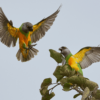
![© William Haun [CC BY-NC 2.0] via Flickr](https://parrots.org/wp-content/uploads/2023/01/wpt_Senegal-Parrot_1113-16-100x100.jpg)
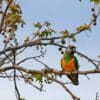

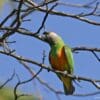
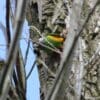
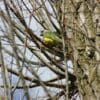
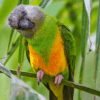
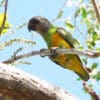
![© Juan Emilio [CC BY-SA 2.0] via Wikimedia Commons A wild Senegal Parrot perches on a palm leaf](https://parrots.org/wp-content/uploads/1990/12/Senegal-Parrot--100x100.jpg)
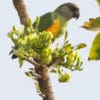
DID YOU KNOW?
The Senegal Parrot nests in a tree cavity made by another bird species, such as a woodpecker.

Poicephalus

senegalus
Size:
23 cm (9 in)
Weight:
155 g (5.4 oz)
Subspecies including nominate:
three: P.s. senegalus, P.s. versteri, P.s. mesotypus
Colour Adult:
P.s. senegalus: Both adults mostly green, yellow on rump; head grey with dark crown, yellow lower breast and abdomen, tinged orange in centre; bright yellow underwing coverts and undertail coverts; thighs green. Beak grey; bare cere and eye ring dark grey. Eye yellow.
P.s. versteri: As in senegalus, but darker green upperparts; lower breast to abdomen orange/red in centre.
P.s. mesotypus: Paler than senegalus; green breast extends more down toward orange abdomen.
Colour Juvenile:
Juveniles generally duller than adults; breast and abdomen green suffusion. Beak pink/white tipped grey. Eye ring pale grey, eye dark brown.
Call:
Noisy with large variety of mainly harsh and high-pitched screeches, squawks and whistles. More raucous when excited.
More Information:
Content Sources:
CITES
Avibase
BirdLife International
Cornell Lab of Ornithology/Birds of the World
Parrots: A Guide to Parrots of the World, Juniper and Parr, 1998
Parrots of the World, Forshaw and Cooper, 1977. 2010 edition
Parrots of the World, Forshaw, 2006.
Parrots in Aviculture, Low, 1992.
Psittacine Aviculture, Schubot, Clubb and Clubb, 1992.
Captive Status:
Very common
Longevity:
20-25 yrs
Housing:
Walk-in aviary, minimum length 2.1 m (7 ft), or indoor cage minimum length 1.8 m (6 ft).
Diet:
Cooked beans and pulses, boiled corn; sunflower, dry, soaked or sprouted; walnuts greatly favoured; fruit such as: apple, orange, banana, rearing food (hard-boiled egg, wholegrain bread and carrot, ground to crumbly consistency); fresh vegetables such as: carrot, celery, green beans and peas in the pod; complete pellet.
Enrichment:
Provide overhead misters or shallow water bowls for bathing; foot toys, destructible (non-toxic) toys, non-destructible (non-toxic plastic) toys, food-finder toys, preening toys, different texture and size hanging perch toys, fir branches, push-and-pull toys (sliding up and down), vegetable tanned leather toys.
Nest Box Size:
Vertical box, 12″ x 12″ x 24″ (30.5 cm x 30.5 cm x 61 cm).
Clutch Size:
2 to 4
Fledging Age:
10 weeks
Hatch Weight:
—
Peak Weight:
—
Weaning Weight:
—
World Population:
Unknown, but reported to be abundant. Decreasing.
IUCN Red List Status:
Least Concern
CITES Listing:
Appendix II
Threat Summary:
Not globally threatened. Uncommon to common in some areas. Heavily trapped for wild bird trade: between 1985 and 2014, over 800,000 individuals were exported from Africa; this figure likely does not reflect the full extent of trade, as illegal and domestic trade will not have been fully accounted for.
Range:
P.s. senegalus: W African dry belt, mostly north of lat 9N, from S Mauritania, Senegal, Guinea, including Los Islands and S Mali east to S Burkina Faso and N Nigeria.
P.s. versteri: W African wet zone, north of rainforest belt to lat 9N from Liberia (introduced to Monrovia district) and Ivory Coast east to W Nigeria.
P.s. mesotypus: E and NE Nigeria, to N Cameroon, south to Adamawa Plateau, SW Chad, and possibly NE Central African Republic.
Habitat:
Found in wide range of wooded areas from open farmland with scattered trees to closed-canopy forests. Up to 1200 m (3936 ft).
Wild Diet:
Takes fruits of Ficus, Adansonia, Ximenia americana and Pterocarpus erinaceus, buds, seeds of Parkia, Acacia albida, Khaya senegalensis, Vitex cienkowskii, Butyrospermum parkii and Sclerocarya birroea; also buds of Cassia, flowers of Melina and crops such as millet and peanuts.
Ecology and Behaviour:
Mostly sedentary, but will visit rainy areas. Usually found below 1000m (3280 ft). Social outside breeding season. Usually seen in pairs but also in flocks up to 20 or more to feed.
Clutch and Egg Size:
2 to 4 eggs, 29.5 x 26.0 mm (1.1 x 1 in).
Breeding Season:
January-October, Gambia; June, Ghana; August, Niger. Nest is in cavity in branch of large trees.

